Environmentalism - Chapter 17 Wonders of Mother Nature

Mother Nature has created such diverse species of mammalians, reptilians, aquatics, to arthropods (arachnids) and botanical species that are so complex and versatile we still as Homo sapiens do not fully know on understanding everything about such fascinating species of mammals to avian species and insects and fungi to even viruses that are all living around us, on us to within us.
I have picked out a number of species from the quoted above that I have documented on instead of writing up on the everyday issues of animal and environmental welfare, climate destruction to botany and governmental politics to just remind you of what surrounds us to date to no longer living on planet earth.
Keeping mostly out of politics in this draft and focusing on an array of viruses, plants mammals and fish to spiders and birds I would like this document to be used as a form of education but more importantly why we as homo sapiens should respect Mother Nature and what Mother has provided and shown to ourselves to learn rather than eat and destroy for our own greedy back pockets. I have documented on a handful of species of which I shall carry on beefing this particular document up with more facts and more species extant and extinct.
Some pictures to documentation will make you cringe but most I can assure you, you will enjoy and the more we learn the more we become aware of why we should respect what lives around and within, from the most potent and deadliest plant on earth, to bacteria that lives’ within our large and small intestines, and skin to the most fastest land, sea and air mammal or the most deadliest to largest and smallest species on earth. Enjoy - I shall continue updating this weekly.
Most toxic plant[s] on the planet;
Every plant no matter what species is poisonous in one way or the other from a simple English Daffodil that can cause acute dermatitis or gastroenteritis to skin burns, however there are some that you most likely have in your back yard and before I go any further on this, please “don’t dig them up and kill them” learn from them and respect their presence.
Ricinus communis – Castor oil plant.
The Ricinus communis I must say has to be one second of the most toxic and extremely harmful plants on the planet to date. Belonging to the monotypic genus it is better known as a “spurge” and with large palm shaped leaves similar to that of the Fatsia japonica.
The leaves are very large and within the rain forest can grow to around triple the size of your hand. Growing mainly in America, Asia and the European Union the Castor oil plant produces “beans” which are not true beans and (most certainly not edible).
Now you REALLY NEED to read this and please pay attention, the castor oil plant and the “false castor oil plant” are completely different, the false castor oil and the castor oil plant look similar however the false castor oil plant has non-glossed leaves yet the castor oil has dull looking green leaves of which both are mostly ever green.
Keeping to the “Castor oil plant” the seeds (beans) contain between 40% and 60% oil that is rich in triglycerides however it’s also rich in Ricin an extremely toxic substance that can and will kill, the seeds (beans) have to actually be processed to cause any real harm.
Ricin is present in low levels throughout the plant, but it’s largely concentrated in the seed coating. Seed poisonings are rare and usually involve children and pets, but they can be deadly. As few as three seeds, which are green with brown markings, could kill a child who swallows them easily.
Symptoms of castor bean poisoning include nausea, abdominal cramps, vomiting, internal bleeding, and kidney and circulation failure. Many people suffer from an allergic reaction to the dust from the seeds and may experience coughing, muscle aches and difficulty breathing. Exposure to the dust is most common in areas where the beans are processed for commercial use. In ancient times, the castor bean was used in ointments, and allegedly, Cleopatra applied the oil to the whites of her eyes to brighten them. Ricin is better explained within this link – http://www.bt.cdc.gov/agent/ricin/facts.asp
Castor oil is a mild-tasting vegetable oil that is used in many food additives, flavourings and in candy production. It’s also available to the consumer as a laxative and to induce labour (though no scientific evidence shows it’s successful in inducing labour although I really do advise as a botanist to please SEEK MEDICAL ADVICE and leave the plant’s seeds well alone) please don’t destroy the plant if you have children or pets, instead educate them on the plant and for more information you can email myself at [email protected] or join our botanical group here on Facebook - https://www.facebook.com/groups/353161988048334/?fref=ts
There are many other plants that are toxic such as the deadly night shade Atropa belladonna to the common Yew Taxus Baccta, or the Monks Hood Lilly Aconitum selections or Foxglove better known as the Digitalis (used widely in cardiac pharmaceuticals which are very effective and potent).

Fastest aquatic species on the planet;
Well there seems to be much speculation on this however it’s time to blow the speculation out of the water. At a total speed recorded in all oceans that it swims the fastest swimming fish on earth is in fact the Sailfish better known as Istiophorus albicans bust must not be confused with the sword fish or marlin.
Easily reaching speeds of 0-69mph this fish is one hell of swimmer using its lateral line and sheer muscular power in its rear the billfish as it’s more commonly known can swim the one hundred meter Olympics in 4.8 seconds. The Istiophorus albicans is prized as a game fish due to its agility and sheer power in giving fishers (hunters) a challenge for their money.
Its sail is mostly kept folded down when swimming of which is seen to leap high out of the water and back in again when excited. The Bill can change its body colour when excited or under threat to. Some fishes that can reach speeds “near to the 69-70mph mark are the Marlin, Marlin’s common name is thought to derive from its resemblance to a sailor’s marlinspike. Marlin are incredibly fast swimmers, reaching speeds of about 68 mph. Predators include the white shark and shortfin mako. Other fishes are Bluefin tuna that are found throughout the Atlantic and Pacific oceans in subtropical and temperate waters.
They form schools while young; large schools are easily observed at night. The Bluefin is one of the largest tuna species. Killer whales and pilot whales feed on them most often.
The Bluefin is highly valued as a food for human consumption sold both fresh and frozen. Quality fish are especially favoured in Japan, where they are sold at the high price in fish markets. The Bluefin tuna is also a popular game fish, especially in the USA the Bluefin can reach a top speed of 0-46mph we rather see them NOT hunted though as of dwindling ocean stocks and the torture that they go through when line fishing.
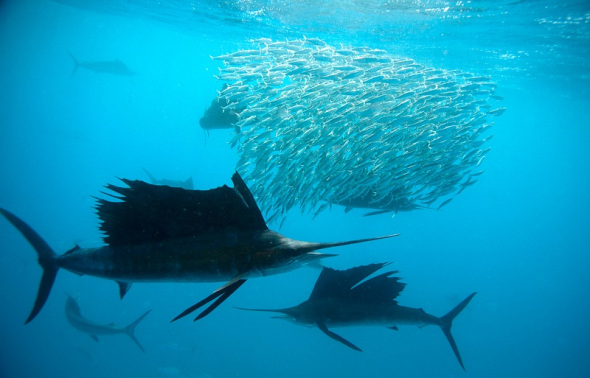
Animal that consumes the most food;
I found this to be a difficult one to explain as one would believe that the based on the size of the “prey” or “fruit, nuts to other” in (size) or the “number of humans” would be the most with regards to consumption. Such as the male Lion Panthera leo that consumes by far more than that of the female when not in gestation or milking and easily finishing of a springbok or wildebeest however this simply goes on the (size of the animal[s]).
The Blue Whale Balaenoptera musculus has to be the largest of all consumers and the largest of all living species on the face of the planet weighing in at a whopping one hundred and ninety seven tons with some species found to be weighing in at over 200 TONS. How much can it consume though? Well let’s take a look.
A simple adult can consume over 60 million krill a day based on “what ocean they are in” and maturity however the normal estimated feed its around 45-60 million krill, its most chosen food. This weighs in at a total feed size of exactly 3600 kg (8000 lb) of krill in a day “that’s one hell of a lot of fish” when you think that the average weight of a human is 194.7 pounds, so you can quite easily see the difference here. Humans though do consume by far more in the way of (food) however I am explaining the “individual species” and not the “entire species consumption of over 8.9 billion humans on planet earth to date”.
The Blue Whale at (adult) stage has to consume this much in species prey to keep its 1.5 million kilocalories up or it shall become underweight which then can effect behaviour thus beaching itself although there is little known on this particular behaviour and what the real reason is they beach.
Balaenoptera musculus can take in as much energy at 1.5 million kilocalories as it gives out or (expends) however with this feed amount they can conserve energy extremely easily by swimming slowly and storing krill in its mouth thus slow feeding similar to a IV therapy (slow release intravenous drip) quite amazing.
Other animals that are known to consume by far more than the average are Humming Birds Archilochus alexandri, that consume more than their body weight of insects and nectar a day along with Shrews Sorex araneus that consume three times their body weight in food a day.
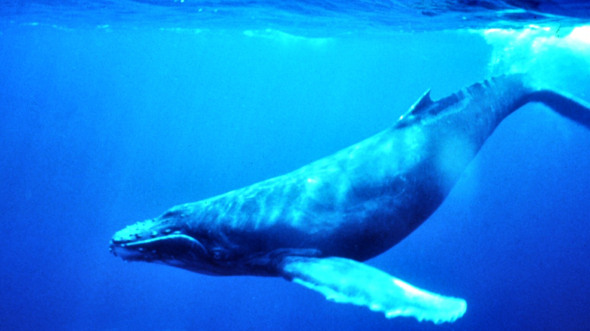
How many “species of good virus live within the human body”;
I loved this question like the rest that have been asked by many members of the public that email us every day however this has to be the most intriguing to fascinating but one that I simply cannot answer in full as to actually count how many individual same species of good and bad viruses in the human body it would take an extremely unhealthy human and healthy human plus a good year to evaluate.
In total leaving the bad bacteria out there is a total species count that are “good bacteria” living within our bodies of seven good species although there are “more” these are primarily the most important players and I have listed them below.
LIVING AND THRIVING ORGANISMS
Throat – Species – Neisseria lactamicia = 4,154 species
Behind your ears - Species – Propionibacterium acnes = 2,359 species
Nostrils – Species – Staphylococcus epidermidis = 2,264 species
Tongue – Species – Streptococcus salivarius = 7,947 species
Inner elbows – Species – Corynebacterium simulans = 2,012 species
Vaginal opening – Species – Lactobacillus acidophilus = 2,062 species
Large intestine – Species – Bacteroides thetaiotaomicron = 33,627 species
Total species count of good virus microbe species = 55,425 (and that’s just good bacteria)
All species above are major players however like explained this is simply the “major players” as listed in a 2013 science biology journal. Within our bodies human cells are outnumbered ten to one by bacteria. Some eight million genes function in this invisible universe more than three hundred times the number in our own cells. Though some of our microbial tenants pose threats, we literally can’t live without most of them. They help digest our food, grade our immune system, and ward of deadly germs.
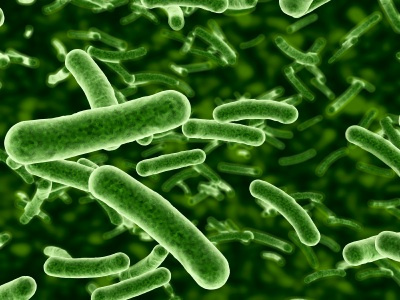
Belly Button?
Yes, microorganisms live on your skin, even though you can’t see them. After it takes a tour of your belly button, the swab gets wiped on a specially prepared dish, where the bacteria can grow. Then the researchers figure out what’s growing on you.
So far, the most common colonies are from Staphylococcus epidermidis and Micrococcus luteus. Have they found any rare, truly bizarre bacteria? Why, yes — in Dunn’s own belly button. It’s a bacterium called Enterococcus mundti and it was only recently discovered by scientists. “(It’s) found on me, soybeans, and silk moths. Go figure,” Dunn said.
It’s a tricky thing using those special plates — called agar plates — to grow bacteria. Some bacteria grow like crazy on the plates, so we know the most about those kinds, Dunn said.
Plenty of bacteria remain undiscovered. And we don’t know much about many of the bacteria that live on our bodies because we can’t grow them.
Dunn and his team are extracting bacterial genetic information from the belly buttons, and by literally reading it, they know which species of bacteria live on the skin. “When it is done, we will undoubtedly find some very rare species, some of them probably new to science,” Dunn said.
Are you picking your nose?
There are many far-fetched ways to die in this world. Picking your nose is one of them. Yes, it’s true. You really can die from picking your nose. Simply put, there is a bone in the nose called the ethmoid bone.
This bone separates the nose from the brain. Though you would more than likely need a really long fingernail, or other long object to get up there, it is indeed possible to do so and it “does happen”. As a matter of fact, if you accidentally poked through this bone, brain fluid could be leaked-causing meningitis, which definitely is a killer.
So you see, picking one’s nose seems harmless. And in most cases, it is. Sitting at that stoplight, in the private comfort of your vehicle, does not give you anonymity.
But for some reason, it’s the most popular place for people to dive into their nasal cavities. In these instances where you feel compelled to see what’s up there, it’s best to wait until getting to a restroom.
Make sure that before touching any “open” areas of the face (ie. eyes, nose, and mouth) -that you wash your hands thoroughly, as this is how viruses are most frequently spread.
Most deadly predator on earth;
Let’s face up to some actual real evidence here leaving out the “facts” first. The Homo sapiens are the most deadliest predator that can kill anything, destroy through negligence and harm without even touching, yes “we are the most deadliest from (evidence)” however this is about FACTS and the most deadliest predator as much as you think we are YOUR VERY WRONG.
The most deadly predator actually lies within every nation on earth, Lion? Bush Elephant? Cape buffalo? Well they are dangerous and very unpredictable but they are nowhere near as dangerous as this “microbe”.
Clostridium Botulinum is the most toxic animal on the face of the planet and it is a killer and has killed many thousands of people and still kills today.
Clostridium botulinum is a Gram-positive, rod-shaped bacterium that produces several toxins. The best known are its neurotoxins, subdivided in types A-G, that cause the flaccid muscular paralysis seen in botulism. They are also the main paralytic agent in botox. C. botulinum is an anaerobic spore-former, which produces oval, subterminal endospores and is commonly found in soil.
One teaspoon of this bacterium, properly distributed, could kill every single human being in the United States. About 9 lbs (4 kgs) could kill every human in the world. Like the venom of botulinum it is a neurotoxin, stopping communication between the brain and the muscles, resulting in paralysis of the diaphragm, then asphyxia = immediate and extremely painful death.
Botulinum is found in the soil of every continent and ecosystem on Earth, from the Sahara Desert to Antarctica. It is found in soil brought up from the ocean floor. It requires absolutely perfect conditions in order to become active and thus dangerous. You would not be able to contract the toxin by eating dirt, since your digestive juices are too acidic to allow the bacterium to grow and produce the toxin.
But the spores are extraordinarily difficult to kill, able to survive in boiling water for 10 minutes if you were to can food without boiling it (cold canning), airborne spores may enter the oxygen-free environment of the food and grow very quickly. Upon eating the food, the toxins would be present in your body immediately, and eating only a nibble of a green bean is more than sufficient to kill you within a day. No animal is known to have immunity to botulinum. A mere 1 nanogram per kilogram dose will kill any living organism on the planet.
An elephant weighing 5,454 kgs (12,000 lbs) (4 tons) would die in less than 3 days after consuming 5,454 ngs of botulinum toxin. This is equal to 0.005454 milligrams. Still believe that we are the most dangerous organisms on earth? Should some bright spark decide on processing botulinum and then placing that in a simple weapon that explodes then (the entire continent that it explodes in are doomed) and humans would die an extremely painful and horrifying death. There are certain individuals that have this deadly bacteria stored of which we are not advertising, it’s locked in secure chambers, deep underground, and the doors of the chambers require 5 alternative passwords and five people that are changed every day to access this most destructive and most deadliest bacteria.
From investigations on botulinum we are more than aware of whom has this bacteria in certain “forms” and what the bacteria is placed in, it’s also known the locations, and why certain individuals are very nervous when it comes to civil disobedience in countries such as the U.A.E
However with regard to animals the cape buffalo is by far the most dangerous game animal on Earth. It is sufficiently thick-skinned to require an elephant rifle, and is the animal most responsible for the introduction of double-barreled rifles. A double-barreled rifle offers the hunter an immediate follow-up shot to finish a wounded animal, and cape buffaloes can be counted on to withstand the first shot, even if they are struck in the heart, and still charge. The .585 Nyati caliber was invented for use against this animal. Nyati is Swahili for Cape buffalo.
You may think touring Africa’s grasslands in a safari jeep is safe, and were it not for the Cape buffalo, you would be fairly correct. They may charge without any provocation at all, and they overturn jeeps, trucks, and vans by ramming them headfirst. A 2,000 lb male can run 40 miles an hour for more than 100 meters. Some professional hunting guides refuse to hunt them, for fear the paying hunter will miss. The Cape buffalo gores and tramples to death over 200 people every year, more kills, possibly, than any other African animal. Please NOTE that International Animal Rescue Foundation is against ALL HUNTING.
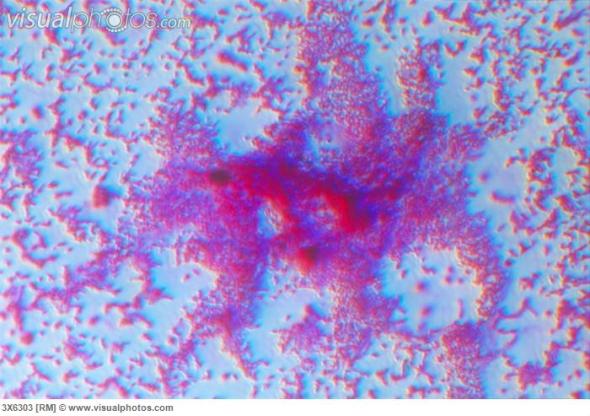
What species has the best eyesight?
Again there is much speculation over this with one saying the Eagle, the other stating the wild cat, FACT the animal that has the strongest and most powerful eyesight is Great horned owl, Bubo virginianus better known as the Tiger Owl.
The Great horned owl’s spectacular binocular vision, allows them to pinpoint prey and see in low light. The eyes of a Great Horned Owl are nearly as large as those of a human being and are immobile within their circular bone sockets. As a result, instead of turning its eyes, an owl must turn its whole head, the neck capable of rotating a full 270 degrees, in order to see in various directions without moving its entire body.
Owls hunt mainly by watching from a snag, pole or other high perch, sometimes completely concealed by the dusky night and/or partially hidden by foliage. From such vantage points, owls dive down to the ground, often with wings folded, to ambush their prey. If you placed a newspaper on a chair, a Great Horned Owl could make out every word on that paper from 50 yards away.
However – Interesting point here as the Great horned owl is not the only animal with the best eye sight, the Mantis Shrimp, can see in a broad spectrum of light that includes infrared and ultraviolet of which has the most powerful eyesight within the aquatic world.

Largest prehistoric animal;
Again this the closest that one could come to as there are still exploration teams working on sites around the world and also items that are “foot prints” and also prehistoric 40 million year old items under examination that one still has yet to clearly identify.
The largest though that is recorded is by far the sea monster Basilosaurus, King Lizard and this was one hell of a mammal (type) species that is located in many museums around the world from 40-60 million year old fossil remains.
The King Lizard lived around 40 to 34 million years ago in the Late Eocene. First discovered in Louisiana, America it was thought that this “species” (type) was a form of reptilian of which one is still unsure on.
Basilosaurus was highly elongated. It accomplished this through an unparalleled elongation of its vertebrae, and has been described as being the closest a whale ever came to a snake. The skeletal anatomy of the tail suggests that a small fluke was probably present, which would have only aided vertical motion. Most reconstructions show a small, speculative dorsal fin similar to a rorqual whale’s, but other reconstructions show a dorsal ridge. The whale also possessed small, 0.6 meter (2 ft) hind limbs, which clearly could not aid locomotion on a 15–22 meter (50–72 foot) animal.
In 1845, “Dr.” Albert Koch heard stories of giant bones in Alabama, and went down to cobble together a full skeleton. He eventually created a huge 114-foot (35 m) skeleton of a “sea serpent” he called “Hydrarchos”, which he displayed in New York City, and later Europe. It was eventually shown to have come from 5 different individuals, some of which were not Basilosaurus. The remains were eventually destroyed in the Great Chicago Fire.
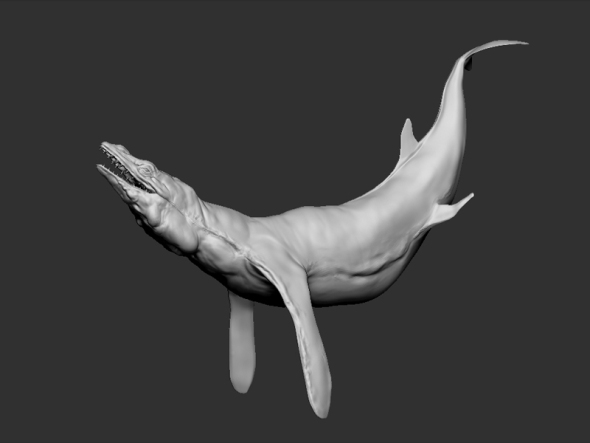
Strongest animal;
One would believe that the Elephant or Rhinoceros was the strongest animal, wrong again. The world’s strongest animal is Archegozetes longisetosus.
The African elephant is by far the strongest living animal but it can only lift 25% of its bodyweight. The tropical species Archegozetes longisetosus is one of the strongest animals in the world, relative to its mass (100 μg). It lifts up to 1182 times its own weight. It’s an equivalent of a human lifting 212000 pounds.
On the other hand, Rhinoceros beetle can carry 850 times its own weight. To put that into perspective that would be like one of us lifting a 65 ton armoured tank.
We should also consider the strength of the jaws. The saltwater crocodile is a fearsome chomper who can inflict a bone-crunching bite that is around 3-4 times stronger than a lion. To give you a rough idea, the force of this bite would be a bit like having a car fall on top of you.
For a more scientific look in to this amazing creature let’s take a look.
The holding and pulling forces generated by claws of the microarthropod Archegozetes longisetosus (Chelicerata, Acari, Oribatida) on three substrates with different roughness (R(a)=0.05 microm, 1 microm, 30 microm).
Holding forces were measured perpendicular to the substrate using a strain gage force transducer; pulling forces were measured parallel to the substrate using an analytical scale. We found a significant positive correlation of surface roughness and the forces generated.
Mites produced holding forces on horizontal rough surfaces (R(a)=30 microm) of up to 1180 times their weight; on vertical rough surfaces (R(a)=30 microm) they can pull with 530 times their weight, effectively involving only two pairs of legs.
The relative forces are five times higher than theoretically expected for organisms of this size (<1 mm, 100 microg) and higher than any relative forces reported for insect claws. Muscles involved in claw action produced stresses up to 1170 kN m(-2), a value that is only excelled by decapod crustacean claw closer muscles. Ours is the first study of performance by chelicerate apoteles and claws and also the first to measure forces generated by any microarthropod.
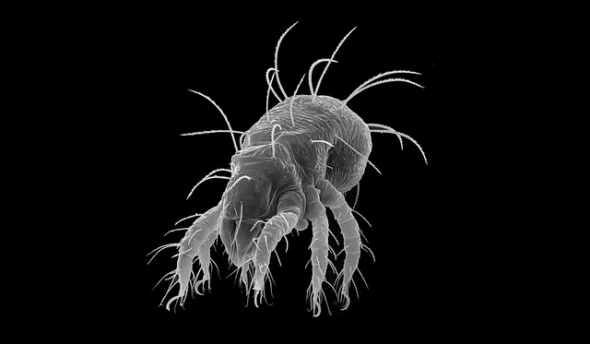
Slowest animal in the world;
There are 3 animals known to be the slowest animals in the world. Sloths move only when necessary and even then very slowly. On the ground the maximum speed of the three-toed sloth is 2 m or 6.5 feet per minute or 0.15 mile per hour.
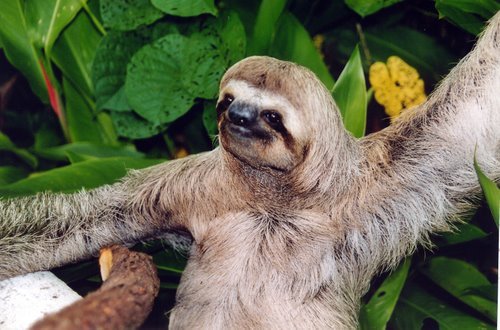
A garden snail’s speed is 0.03 mph (yes a snail is an animal and not an insect). Due to its slowness, the snail has traditionally been seen as a symbol of laziness. In Judeo-Christian culture, it has often been viewed as a manifestation of the deadly sin of sloth. A giant tortoise’s speed is 0.17.
International Animal Rescue Foundations – pick of the month is Scarabaeus
Never underestimate the powers of Mother Nature’s insects as they sure do teach us many facts of life helping us to understand previous living and exploration times to bettering technology.
Animal of the month is; Scarabaeus (Arthropoda)
Dung Beetles - Scarabaeus viettei (one of a type)
Dung Beetles are actually very unique and don’t just muck in with dung as one may believe they do.
The Scarabaeus viettei (one of a type of species from the Scarabaeidae super family) has been noted has been noted as using “polarized light” of which they use the “milky way” to navigate.
A recent study in 2003 showed that Beetle’s use polarized light from the moon to help them move in a straight line (now that’s pretty amazing) but the researchers where surprised to find that insects could actually stay on course even on a moonless night (how bizarre).
To see what else was going on researchers then timed the beetles crawling from the centre of a cylindrical drum to the edge. The drum was open topped so the insects could use the night sky to orientate themselves on a moonless night, the insects took twice as long as they did under a full moon with a cap on that hid the night sky from their view of which they needed six times longer implying that the stars where involved.
Researchers then moved to a planetarium. By switching stars on and of researchers identified the guiding light as the Milky Way. It had been assumed that the insects could not navigate in this way because their eyes cannot make out individual stars. But using the Milky Way does away with such resolution. How strange but factual to know that even the smallest of living species on our planet use such powerful yet small senses that we humans cannot.
Humans can use more or less the same type of star guidance, however we are simply talking about a Beetle that’s by far a lot smaller than the average 5ft 9” human. Just goes to show how important our species of flora and fauna are too us along with combating an array of technological problems.
Was this study carried out by ancient Romans or Egyptians that used the North Star and formations to guide them home? Who knows, what we do know is that we still have a lot to learn from our tiny creatures.
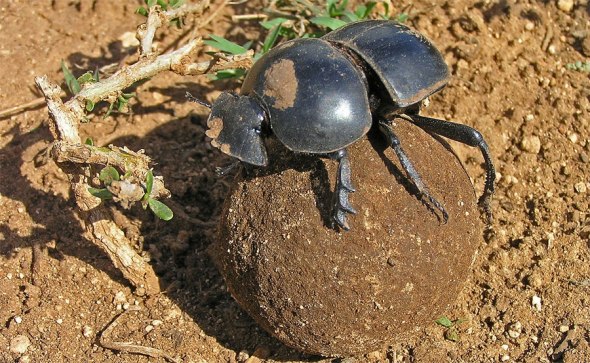
Dr J C Dimetri V.M.D, B.E.S, Ma, PhD , MEnvSc
INTERNATIONAL ANIMAL RESCUE FOUNDATION
PLEASE DONATE TO OUR CURRENT RESCUE
CONTACT OUR MAIN OFFICE
The video below is an old documentary however there are still NO security measures in place to stop people from purchasing small vile’s of seriously dangerous biological agents or in a more simple terminology “GERMS” that have killed millions of people in the past that terrorists and unit cells now wish to obtain and ARE obtaining.
Another highly dangerous biological weapon is the Spanish Flu (Influenza) 1918 http://www.slate.com/articles/health_and_science/pandemics/2012/12/spanish_flu_mystery_why_don_t_scientists_understand_the_1918_flu_even_after.html
Please note your if you spam this organisation news desk your comments will automatically be placed within spam and report folders of which your IP and email is located then reported automatically. All spam is then deleted that have links or other, if you wish to comment please leave you comment without link to your domain, URL then the comment shall be read, moderated and answered, if you violate these rules you will/could face having your site, link, email closed down. International Animal Rescue Foundation takes internet security seriously, we will not tolerate or accept violations, all emails are subjected to viral/phishing/hacking/ checks before they are even opened. Should an email be received and the named is located within then your IP, Proxy IP, Domain Proxy, Cloud Proxy will and can be traced by our online manned and automatic security team.
Thank you for your co-operation
Rate this:
February 3, 2013 | Categories: You must be the change you want to see in the world | Tags: Animals, climate, Environment, large and small intestines, nature, plants, science, Top Stories | Leave a comment



